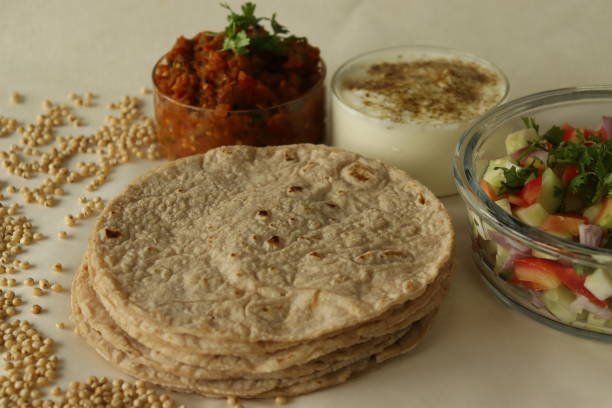When it comes to traditional Indian cuisine, roti (also known as chapati) is a staple food. Whether you’re trying to maintain a balanced diet or simply curious about its caloric content, understanding how many calories are in 1 roti is essential. In this article, we’ll explore the calories in 1 roti and dive into its nutritional value, benefits, and how it fits into a healthy diet.
How Many Calories Are in 1 Roti?
The number of calories in one roti can vary depending on its size, thickness, and ingredients used. A standard homemade roti, made from whole wheat flour, typically contains around 70-120 calories. This estimate assumes that the roti is about 6 inches in diameter and cooked without any added oil or ghee.
Here’s a basic breakdown of the nutritional content in 1 roti (average size of 40g):
- Calories: 90
- Carbohydrates: 15g
- Protein: 3g
- Fiber: 3g
- Fat: 2g
The Nutritional Benefits of Roti
Beyond just counting 1 roti calories, it’s important to understand the other nutritional benefits that make roti a healthy choice:
1. Rich in Complex Carbohydrates
Roti is made from whole wheat, which provides complex carbohydrates. These carbohydrates are digested slowly, helping to maintain steady energy levels and keeping you fuller for longer. For those following a balanced diet, this is an excellent alternative to processed carbohydrates like white bread.
2. High in Fiber
Whole wheat flour is a great source of dietary fiber, which aids digestion and promotes a healthy gut. Fiber also helps regulate blood sugar levels, making roti a better choice for people with diabetes compared to refined carbs.

3. Low in Fat
One of the best things about roti is that it is naturally low in fat when made without ghee or oil. You can keep it heart-healthy by skipping any additional fats during preparation.
4. A Good Source of Protein
While roti is not a high-protein food, it does contain small amounts of protein, which can contribute to your daily protein intake. This is especially beneficial for vegetarians who rely on plant-based sources of protein.
How to Reduce or Modify Calories in 1 Roti
If you’re trying to cut down on your daily calorie intake, here are a few tips to modify the calorie content of your roti without sacrificing its nutritional value:
1. Use Multigrain Flour
Incorporating flours like ragi, jowar, or oats can add extra nutrients while keeping the calorie count similar.
2. Avoid Oil or Ghee
Cooking roti with oil or ghee can significantly increase the calorie content. Stick to dry roasting your roti on a tawa (griddle) for a lower-calorie option.
3. Make Smaller Portions
Instead of making large rotis, opt for smaller ones to help control portion size and reduce calorie intake.

Roti vs. Other Carbohydrate Sources
Curious about how roti compares to other common carbohydrate sources like rice or bread? Here’s a quick comparison:
Roti vs. White Rice
While 1 medium-sized roti contains around *90-100 calories, a single serving of white rice (about 1/2 cup cooked) has about 100-120 calories. However, roti has the advantage of offering more fiber and slower-digesting carbohydrates, making it a better option for maintaining steady blood sugar levels.
Roti vs. Bread
A slice of white bread typically contains around 70-80 calories, but it’s lower in fiber and nutrients compared to whole wheat roti. If you’re watching your calorie intake, you might think bread is the lower-calorie option, but roti offers more nutritional benefits overall.
Including Roti in a Balanced Diet
While calories in 1 roti matter, it’s important to consider how roti fits into your overall diet. Here are some tips on incorporating roti into a healthy, balanced meal:
- Pair roti with *protein-rich foods* like lentils, beans, or paneer to create a well-rounded meal.
- Incorporate a range of vegetables to boost your intake of fiber, vitamins, and minerals.
- Limit high-calorie condiments like butter, ghee, or creamy sauces to keep the meal light.

Conclusion
The calories in 1 roti may seem modest, but the overall nutritional benefits make it a fantastic addition to your diet. With its balance of complex carbs, fiber, and low fat, roti can be a healthier option compared to other carbohydrate-rich foods. By paying attention to portion size and cooking methods, you can easily enjoy roti as part of a well-rounded, nutritious diet.
Whether you’re aiming for weight management, better digestion, or balanced blood sugar levels, roti can be a staple food that offers lasting health benefits.
